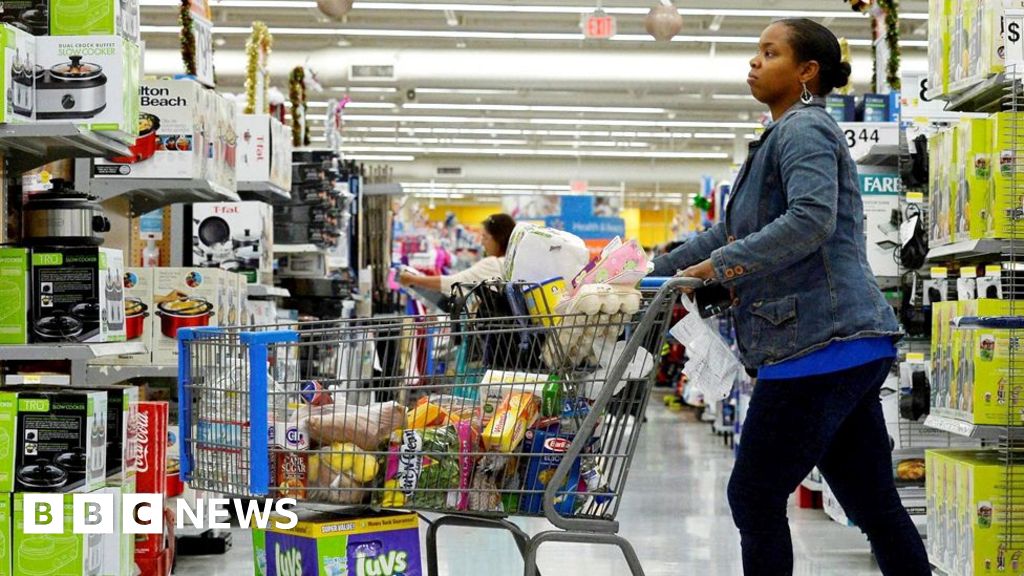- Author, Charlotte Edwards
- Role, BBC Business reporter
-
Consumer price rises in the US eased slightly last month, official data suggests, ahead of a key meeting where policymakers will publish their latest interest rate decision.
According to the US Labor department, prices rose 3.3% in the year to the end of May, down 0.1 percentage points from the month before.
Core inflation, which strips out more volatile items like food and energy prices, also slowed despite rents continuing to weigh on household budgets.
Despite borrowing costs standing at their highest rate in years, officials at the Federal Reserve held off on any interest rate cuts this month.
The inflation figure was lower than some economists’ expectations, meaning they now believe a rate cut this year is more likely, but it remains above the US central bank’s 2% target.
People in the US are still feeling the pinch of rising rents and electricity, while food inflation remained at about 2%.
The rate of US inflation varied for other goods and services.
The pace of price rises for transport, such as taxi rides, rose by more than a tenth in the year to May while the used car inflation fell by almost a tenth.
Lindsay James, investment strategist at Quilter Investors, said that despite slide in inflation markets “remain stuck in a holding pattern”.
“[We are] waiting for either inflation to come down more quickly towards the 2% target, or for the economy to buckle under the strain and require a fresh bout of stimulus.”
The inflation rate is the pace of price rises or falls over a specific period.
In the US, the Bureau of Labor Statistics uses the Consumer Price Index to measure inflation.
This gets its information from 23,000 businesses and involves price checking around 80,000 consumer items.
While the pace of average price rises remained consistent, some major US retailers, including Target, have slashed prices of goods like food and baby products to try to attract customers.
The price of milk at the supermarket saw a 1.3% drop and there were also decreases in the prices of other non-alcoholic drinks.
Fruit and vegetable prices remained unchanged.
Rent increased by 0.4%, which matched April’s rise, and healthcare costs rose 0.5%.
Prices for prescription medications rose by 2.1% and the cost of hospital services also increased by 0.5%.
How the US economy is faring is particularly important in the run-up to the presidential election on 5 November.
Inflation figures are said to be affecting US President Joe Biden’s popularity as Americans continue to feel the pinch.
The US Federal Reserve held its target rate at 5.25% to 5.5% on Wednesday.
“A rate hold [has] been priced into the markets, making short-term volatility unlikely,” said Ben Nichols, interim managing director at Raw Capital Partners.
#inflation #cools #interest #rate #decision #looms,
#inflation #cools #interest #rate #decision #looms
